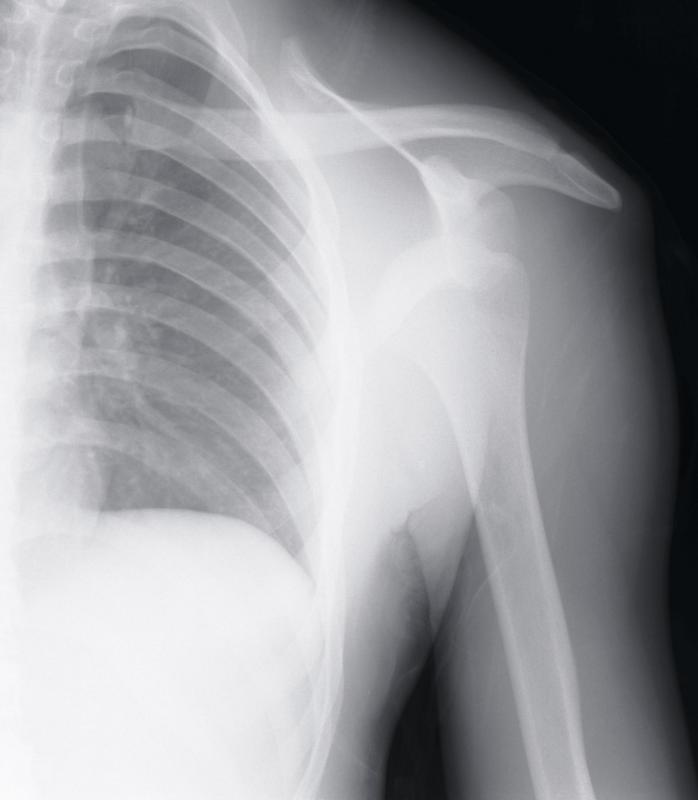At WiseGEEK, we're committed to delivering accurate, trustworthy information. Our expert-authored content is rigorously fact-checked and sourced from credible authorities. Discover how we uphold the highest standards in providing you with reliable knowledge.
What Are the Treatments for a Dislocated Shoulder?
Two common treatments for a dislocated shoulder exist, both of which are normally employed sequentially for any injury of this type. They are called "reduction" and "rehabilitation," respectively. Reduction refers to physically setting the bones back into place. This is normally followed by rehabilitation, a much longer process that, which can take months, during which the joint is first immobilized, and later gently exercised until it can fully return to normal use. Pain management of varying levels will likely be a part of both processes.
Setting the shoulder joint, called "reduction" in medical terminology, should ideally be done immediately after the injury occurs, but only if a medical professional is on site. If this cannot be done, however, the injury should be immobilized with a sling or splint, and the patient should be taken to a hospital or doctor's office as soon as possible to have the shoulder set back in place. If completed in a hospital, the injured person may expect to be sedated prior to the reduction procedure.

Three main types of closed reduction, or nonsurgical reduction, may be performed. A doctor may perform scapular manipulation, during which the shoulder is rotated and popped into place as the patient reclines or sits upright. When the elbow is flexed to rotate the shoulder, inducing muscle spasms to help reset the area, it is known as an external rotation, or "Hennepin maneuver". The traction counter-traction reduction involves two health professionals applying traction to the area, allowing it to relax and return to its natural placement.

If reducing the shoulder joints fails to work, the patient may require a surgical operation, or an open reduction. After either procedure, the patient can expect x-rays to be taken in order to ascertain the shoulder's complete reduction. Patients can then expect to keep the injury immobilized for several days or weeks, depending upon the extent of the injury and the physician's advice.

Following the reduction, and a period of rest and relaxation to allow full healing to occur. After a few weeks of healing, the doctor may initiate the second part of the treatment, know as rehabilitation. This generally takes the form of physical therapy. Gentle exercises and increased movements may be added gradually until full use of the shoulder and its surrounding area is regained.
Both of the main treatments for a dislocated shoulder are involve pain, and should typically be met with strong pain relievers or muscle relaxants at different stages. Typical over-the-counter medication is usually too weak to combat this discomfort, though it may also come into play in the later stages of rehabilitation. A physician will usually prescribe a stronger dose or type of medication for the patient. Patients can also use hot or cold applications to help treat the pain.
AS FEATURED ON:
AS FEATURED ON:













Discuss this Article
Post your comments